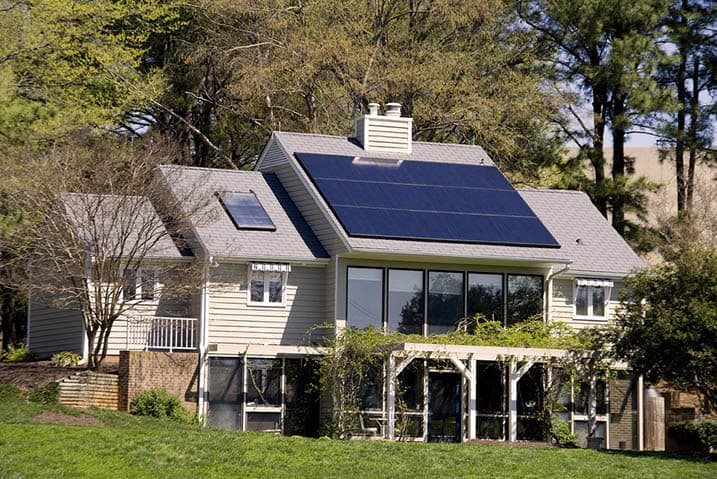Why Utahans should use Tesla Powerwalls with Solar

Some believe solar power took a turn for the worse in November 2017 when Rocky Mountain Power nixed its 1:1 credit for excess solar-generated power sent back to the grid, reducing it to a 90% credit.
But they couldn’t be more wrong.
That’s because the less solar-generated electricity exported on to the grid by Utah homeowners with solar, the more of it they keep for themselves at market rate – making Powerwall+solar for Utahans a wise economic decision.
Utah is a wonderful place to have residential solar because of its generous amount of sun exposure. A 5-kilowatt solar system on a Utah home will generate about 5 kilowatts per day. This means that on average, an array will produce as much or more than the system size installed.
However, how much sun your state has isn’t the only deciding factor for solar. Politics plays a large role in prohibiting or enabling solar power.
Rocky Mountain Power and Solar Rates in Utah
Utah used to be one of the best places to install solar not only because of its incredible sun exposure but because of the net metering rates. This, however, changed after the Rocky Mountain Power settlement.
Net Metering Changes in Utah
In Utah, solar customers had a 1 to 1 net metering rate. This meant that the rate charge for power from the grid was the same as the rate paid for customer-generated power.
In 2017, Rocky Mountain Power and the Utah Division of Public Utilities created a settlement. This settlement allowed Rocky Mountain Power to lower the rate they pay solar customers to 90 percent of the retail rate.
This isn’t currently that big of a deal, but by October 2020, it will be. After October 1st 2020, the PUC will analyze the data over that 3 year period. They will determine if it is fair for Rocky Mountain Power to change their solar customer rates.
Why Net Metering Rate Changes Hurt Solar Customers
When an individual installs rooftop or backyard solar on/in their home, they usually generate more power than they can use. This extra electricity, however, is not stored for later. Instead, it is put onto the grid in most cases.
At night, or when extreme weather blocks the sun, customers take energy from the grid. The price of the energy put on the grid and taken from it in traditional net metering is the same. When this is the case, net metering essentially facilitates a form of solar backup.
However, electricity companies have started to fight against net metering. They argue that it isn’t fair to the customers not using residential solar panels. In result, electric companies want to lower the rates that they pay solar customers and/or charge them more.
The problem is that when the rate of power produced is less than the rate of power used solar customers end up paying more. Making solar a less economical decision. This is one of the reasons why solar customers have been turning toward battery backup.
Battery Backup: A Solution to Net Metering Rate Changes
Since solar arrays don’t store their own energy, battery backup solutions are needed. Without battery backup, Utah solar customers are still reliant on the grid for power and not leveraging the market rate for power to the extent that they could be.
The Investment Tax Credit and Energy Storage
Although the Investment Tax Credit (ITC) is for solar, it can also be used to decrease the price of energy storage. If residential storage charges with an on-site renewable energy source, it can qualify for the ITC.
One of these renewable sources includes solar. This could be a solar array installed previously or one installed with battery backup storage.
The incentive amount depends on the percentage of renewable energy used to charge it. If for instance a battery charges with solar 80 percent of the time, it would get 80 percent of the full credit. Currently, this credit is 30 percent of the cost, but it is set to decrease to 26 percent after 2019.
Taking a Look at Solar Storage Options
Although most use lithium-ion batteries or lead acid batteries, there are other residential storage options. Go Solar Group has four different levels of backup. Each level of backup provides a different amount of energy storage.
The first level of backup, secure power supply (SPS), isn’t technically a storage option. This is an outlet powered by solar panels during an outage. It provides emergency power when the sun is shining, but it doesn’t store it for later use the way battery backup can.
The best level of battery backup is the Tesla Powerwall. This is a large lithium-ion battery. Depending on how many Powerwalls and the usage of the home, these can store all excess solar power for later use, and customers can link up to 10 Powerwalls at a time if they want.
The Tesla Powerwall and Utah Utility Rate Fluctuation
What sets the Powerwall apart from the rest is its ability to store most or all excess solar power for use at a later date. This means that Utahans with the Powerwall are ultimately unaffected by rate changes.
Why the Powerwall Protects Electricity Rates Unlike the rest of Go Solar Group’s backup options, the Powerwall can store most or all excess solar power. With the Powerwall app, Utah homeowners with solar can choose to use the Powerwall as an emergency battery backup option.
Because the Powerwall can power a home throughout the night, these homeowners don’t have to pull electricity from the grid.
Want to learn more about how the Tesla Powerwall works? Give us a call today or fill out the form on our Utah Powerwall page.



Send a Message
Oops! We could not locate your form.